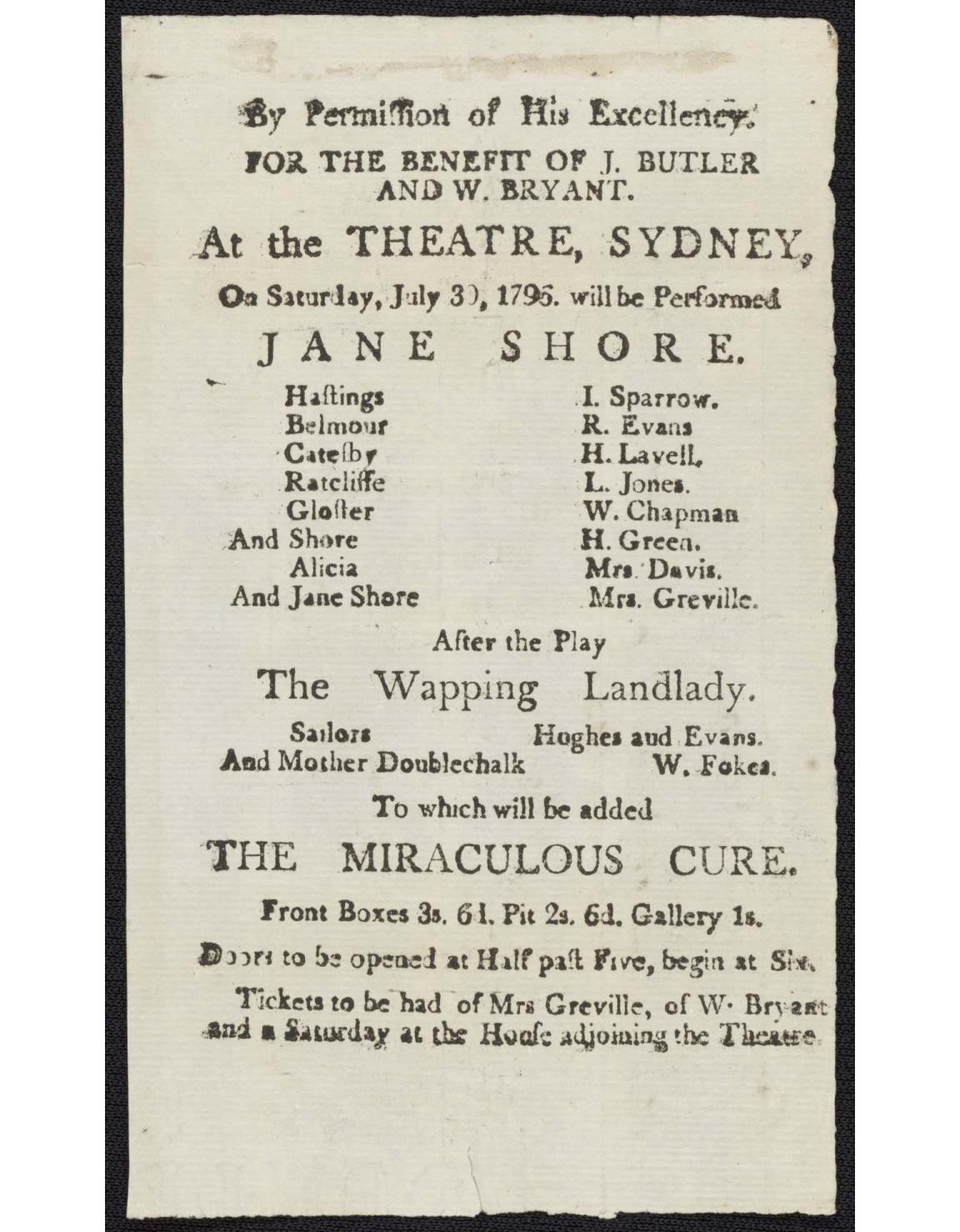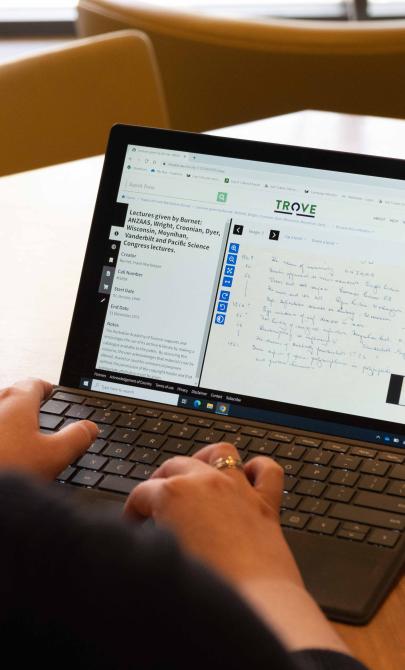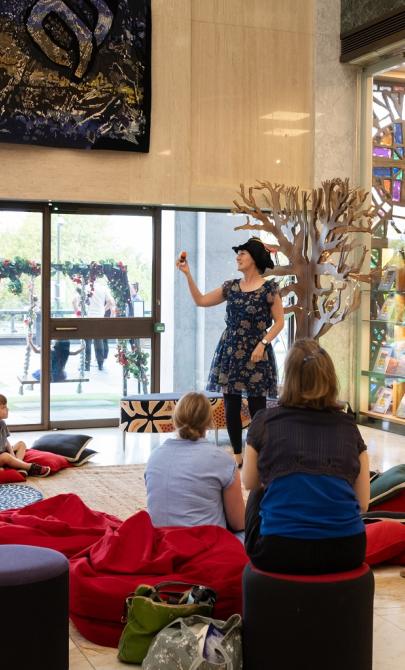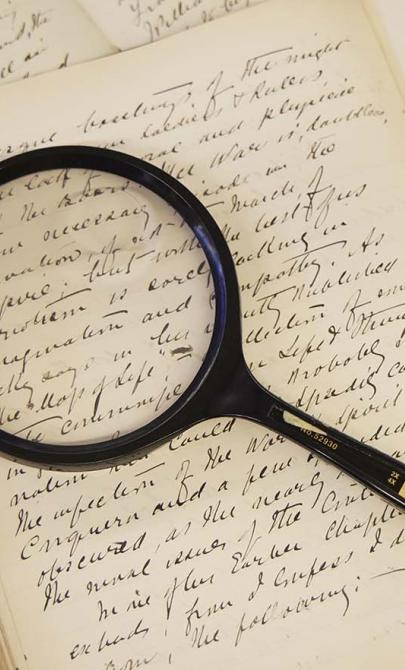An early arts scene
Discovered in a scrapbook held by the Library and Archives in Canada, it was donated to the people of Australia by the Government of Canada in 2007. It is now a valuable treasure in the collection at the National Library of Australia.
Theatre in early colonial life
Despite the harsh conditions in colonial Australia at the time, the playbill shows that early European settlers still found time for leisure and entertainment. It advertises a lively evening of theatre featuring 3 performances:
- tragedy Jane Shore
- a popular comic dance, The Wapping Landlady
- absurdist comedy, The Miraculous Cure.
The playbill also lists the actors who performed in each piece. Some of them became known for other roles in the colony. George Hughes (active 1796–1800), for example, was listed as one of the dancers in The Wapping Landlady. He also printed the playbill and is recognised as Australia’s first printer.
The first printing press
Hughes printed the playbill using a small wooden press that had arrived with the First Fleet. For several years after the fleet’s arrival, no one in the colony had the skills to use it, so official notices had to be written out by hand—a time-consuming task.
Hughes, a convict serving a seven-year sentence for theft, revealed he had worked as a printer in England. In 1795, he was appointed the colony’s official printer.
A rare survival
Playbills were not meant to last. They were usually thrown away, torn down or pasted over after the performance. That makes the survival of this playbill remarkable. For comparison, more than 200 government orders were printed between 1795 and 1800, yet no original copies have been found. In the early years of European settlement, few printed documents were expected to survive—making this playbill an important piece of Australia's cultural history.

George Hughes (Government Printer), Playbill for a performance of Jane Shore, The Wapping Landlady and The Miraculous Cure at the Theatre, Sydney 30 July 1796, nla.gov.au/nla.obj-1419486
George Hughes (Government Printer), Playbill for a performance of Jane Shore, The Wapping Landlady and The Miraculous Cure at the Theatre, Sydney 30 July 1796, nla.gov.au/nla.obj-1419486
Learning activities
These activities explore early colonial life in Sydney and the development of theatre and printing in Australia.
Activity 1: Analysing the playbill
Display the 1796 playbill and ask students to examine it closely.
Prompt a class discussion using the following questions:
- What is the purpose of this document?
- Which colonial governor might have attended the performance?
- What does the playbill tell us about early Sydney?
- What does it reveal about Australian printing and theatre?
- Why do you think a printing press was included in the cargo of the First Fleet?
- How much did it cost to attend The Theatre, Sydney in 1796?
Activity 2: Investigating convict occupations
Explain that the actors in the 1796 plays were mainly convicts and that acting was considered a favourable occupation. Ask students to research other jobs undertaken by convicts in the early days of European settlement in Sydney. Compare these roles and discuss what they reveal about life in the colony.
Activity 3: Researching The Rocks
Tell students that the theatre promoted in the playbill was located in the area now known as The Rocks in Sydney.
Divide the class into groups and assign each group one of the following topics to research:
- How The Rocks were built
- A timeline of population and events in The Rocks
- Key landmarks and buildings
- Trades and activities
- Key people and personalities
- The bubonic plague of 1900
Each group should present their findings as a poster for classroom display.
Activity 4: Redesigning the playbill
Ask students to compare the 1796 playbill with a modern-day theatre or cinema poster. (You may wish to collect some posters for reference.)
Invite students to redesign the 1796 playbill to appeal to a contemporary audience. The redesign should still promote the same plays and dances but use current design and marketing techniques.
Suggested related resources:
These activities complement the Convict experiences, and First fleet (Year 4 resource).



